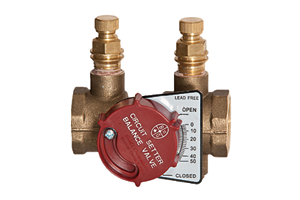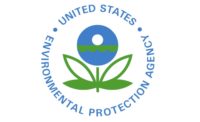
|
According to the Centers for Disease Control and Prevention, at least four million households contain children who are being exposed to lead. It is in the spirit of providing safe drinking water that the 2011 Reduction of Lead in Drinking Water Act was developed and signed into law.
With the enactment of the updated Reduction of Lead in Drinking Water Act quickly approaching on Jan. 4, 2014, it is helpful to review how this piece of legislation evolved, the plumbing and water systems products affected by it and recommendations on how to be compliant.
In the beginning
The Reduction of Lead in Drinking Water Act is based on a number of previous pieces of legislation. The state of California made the first major step toward making plumbing products for potable water lead-free by passing a law in 2006. The law, which went into effect in 2010, does not distinguish between commercial and residential markets. Since then, Vermont, Maryland and Louisiana also have passed lead-free legislation.
With so many states moving to enforce lead-free standards for plumbing products and fixtures for potable water applications, the federal bill was signed in 2011 to make it easier for manufacturers to adhere to a single standard rather than multiple state requirements.
The California law was not the only influencer to the current federal legislation. There are several pieces of legislation and amendments focused on safe drinking water that shaped the 2011 act. They include:
• Safe Drinking Water Act – This act went into effect Dec. 16, 1974. It has been the principal law governing drinking water quality in the U.S. by limiting contaminants. The SDWA required the control of corrosion from water system infrastructure by monitoring the composition of water within the pipes to help minimize lead concentrations in drinking water. While it was effective, it did not address the source of contaminants (the pipes and fittings) or fixtures found in residences or other public water systems.
• Section 1417 – While not the first amendment to the 1974 SDWA act, it was the first substantial amendment made. Added in 1986, this section set the first lead-free standard, prohibited the sale and installation of all pipes, solders, pipe fittings and plumbing fixtures that did not meet the new standard for use in the installation or repair of any public water system or any residential or nonresidential facility that provides water for human consumption. Pipes and fittings could not contain more than 8% lead and solders and flux could not contain more than 0.2% lead by weight.
• Section 1417(e) – In 1996, Section 1417 was further expanded to address the maximum level of lead leaching in fittings and fixtures. Additional points included:
• The requirement of communities to release an annual report summarizing the water provided by their facility;
• A cost-benefit analysis provided by the EPA to analyze potential costs of new standards compared to the costs involved with implementing them; and
• Mandatory certification for water-system operators.
The 2010 California law set lead-free standards at no more than 0.2% allowed lead for solders and flux and no more than 0.25% weighted average amounts of lead in wetted surfaces or pipes, fittings and fixtures. The federal legislation adopted those same standards for the Reduction of Lead in Drinking Water Act in 2011.
Impacted products
The Reduction of Lead in Drinking Water Act requires that lead-free products and components be used in all potable water applications. Nonpotable applications, such as industrial, manufacturing, outdoor water and irrigation are exempt from the lead- free standard.
While third-party certification is not required for lead-free plumbing supplies, the EPA suggests manufacturers consider using their certification process to document product compliance and help avoid potential fines or lawsuits.
Two current standards that can be applied to products seeking to receive lead-free certification are NSF/ANSI Standard 61 and NSF/ANSI 372.
Additionally, under the new law labeling parts to specify lead-free status is not required. However, it is a good practice to implement.
Today, the complete Bell & Gossett product line is available in lead-free format where potable water may be impacted. To help make purchasing decisions easier, B&G lead-free products are clearly labeled with an “LF” symbol.
Mark Handzel is the vice president of regulatory affairs and the director of HVAC commercial building for Bell & Gossett, A Xylem Brand.



